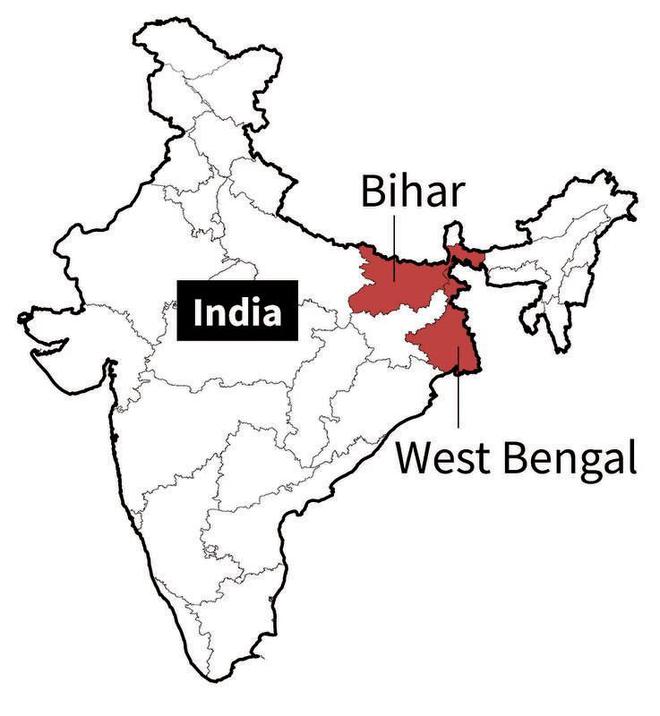Nearly 25 years ago, while participating in a debate in the Lok Sabha, Lalu Prasad had teased Mamata Banerjee for being denied the Railways Ministry, which Nitish Kumar had bagged in the Atal Bihari Vajpayee government that lasted a little over a year. Outraged at the allegations, Ms. Banerjee said that she never wanted the Railways Ministry. “Nahi manga to nahi milega (If you haven’t asked then you won’t get),” Prasad had said.
However, months later, when the Bharatiya Janata Party-led government under Vajpayee came to power again, Ms. Banerjee took over the Railways Ministry in October 1999 and remained on the job till March 2001 before she resigned.

In the years spanning the late 1990s and 2000s, Prasad, Ms. Banerjee, and Mr. Kumar were Railway Ministers for almost a decade. Even after Ms. Banerjee took over as Chief Minister of West Bengal in 2011, she appointed her trusted aides, Mukul Roy and Dinesh Trivedi, as Railways Ministers till September 2012, when she decided to walk out of the UPA-II government headed by Prime Minister Manmohan Singh.
There was a sort of competition among these leaders from the east to occupy the Railways Ministry and announce a plethora of railway projects for the electorate of their States. The Railways Minister could lay the Ministry’s Budget in the Lok Sabha. This provided an opportunity for the all three of them to cement their political stature and extend their reach. The Railways had served as a vehicle for the political pursuits of all these three leaders who had risen to prominence in the 1970s and 1980s with their politics rooted in regional aspirations.
With the BJP coming to power in 2014 and the era of alliance politics coming to an end, the political triad of Prasad, Ms. Banerjee, and Mr. Kumar had little say over the Railways Ministry. The three of them came together on the question of federalism and Opposition unity. The relationship between them evolved and became more accommodating, highlighting the federal structure and regional aspirations.
Over the years, the West Bengal Chief Minister, however, became more comfortable in dealing with Prasad than Mr. Kumar. Ms. Banerjee has always been sceptical of Mr. Kumar and was not in favour of him being declared as the convener of the Opposition INDIA bloc.
With Mr. Kumar exiting the Opposition alliance and forming the government in Bihar with the BJP, Trinamool Congress leaders claim that their leader’s proposal to nominate Congress president Mallikarjun Kharge as the convener of the INDIA alliance has saved the Opposition parties from a major embarrassment.
During the meeting of the INDIA bloc in June 2023, Ms. Banerjee touched the feet of Prasad as a mark of respect in Patna. Political insiders believe that her strong presence at Opposition meetings and decision to name the bloc INDIA also irked Mr. Kumar.
There have been similarities and differences in their styles of functioning. Unlike Mr. Kumar, who has been guided by political opportunism, both Ms. Banerjee and Prasad have been practicing aggressive politics, mostly guided by their own political instincts. Prasad stopped BJP leader L.K. Advani’s Rath Yatra in 1990, whereas Ms. Banerjee stopped the BJP juggernaut in the 2021 Assembly polls winning a decisive mandate for a third term.
The upcoming Lok Sabha polls will determine the future of these three political stalwarts of the east. Ms. Banerjee looks firmly in control, as the BJP’s vote bank in West Bengal has receded since 2019. However, issues such as corruption and anti-incumbency pose challenges for her. For Prasad, who is not in the best of health, the challenge is to take on the Janata Dal (United) and BJP combine together and win the maximum number of seats in Bihar. Mr. Kumar, meanwhile, has to convince his core voters about his frequent switching of sides, including the latest U-turn on January 28.
West Bengal and Bihar together elect 82 MPs to the Lok Sabha. This political triad will play the biggest role in determining the political course of the east. Their personal styles of functioning may be different, but they have shaped the politics of the region for decades. The BJP leadership at the Centre as well as the Congress may ally with them or project them as political adversaries, but they definitely cannot ignore them.







